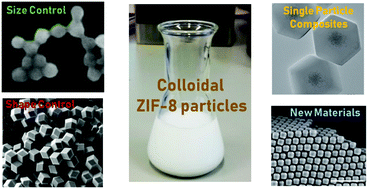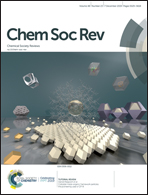Colloidal metal–organic framework particles: the pioneering case of ZIF-8
Abstract
The production of metal–organic frameworks (MOFs) in the form of colloids has brought a paradigm shift in the design of new functional porous materials. Along with their intrinsic interest as porous solids, and contrary to their bulk powder counterparts, colloidal MOF particles can additionally be dispersed, shaped, functionalized, transformed and assembled in a controlled manner, conferring them further properties and applications. In this regard, zeolitic imidazolate framework-8 (ZIF-8) has become a pioneering MOF constituent of colloidal science. Today, the understanding of the role of synthetic parameters, learned after one decade of research, enables the production of monodisperse colloidal ZIF-8 particles with tunable dimensions and morphologies, offering the opportunity to develop new functional materials and composites with novel and promising functionalities. This tutorial review provides a useful guide to prepare ZIF-8 in its colloidal form, covering the published studies on the synthesis of homogeneous ZIF-8 particles with controlled size and shape. In addition, we present the most relevant advances in the development of colloidal ZIF-8 hybrid single-particles, reflecting the great potential and rapid development of this interdisciplinary research field. Finally, we highlight how formulation of ZIF-8 as colloids has led to the emergence of novel physicochemical phenomena that are useful for practical applications. This review aims at promoting the development of MOFs as colloids, taking ZIF-8 as a pioneering and successful case that clearly shows the benefits of bridging MOF chemistry and colloidal science.



 Please wait while we load your content...
Please wait while we load your content...